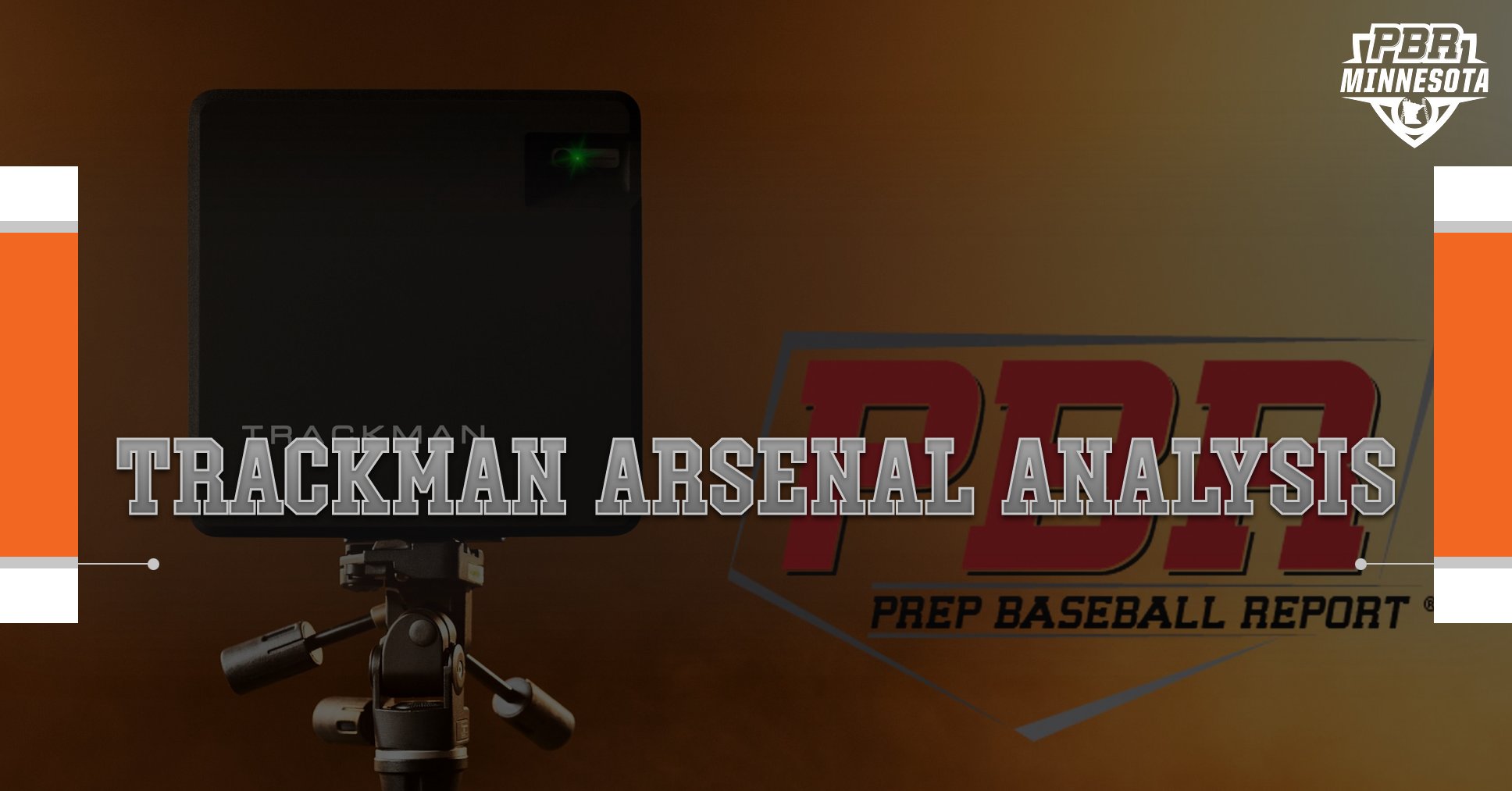PBR MN: Trackman Arsenal Analysis- Adam Stanton
February 24, 2021

The TrackMan Arsenal Analysis is an overview of a pitcher’s data captured by the same optically-enhanced radar technology found at Major League stadiums.
This data has become significantly important for high school, Juco and 4-year players. College programs have evolved beyond radar velocity readings, looking deeper into a pitcher's ability to spin and move the ball. In addition to velocity, TrackMan provides pitchers with valuable data points such as spin rate, spin direction, horizontal movement, vertical movement and more. Ultimately providing feedback to college coaches, MLB scouts and the players themselves; to enhance training and also to identify prospects of interest above and beyond simple velocity readings.
At select PBR Showcases and Events, amateur players now have access to the same technology shared by professionals and are able to see how their pitching arsenal compares with those across the state and the country. The TrackMan Arsenal Analysis will highlight those metrics and explain the benefits behind the numbers.
[For a complete glossary of terms and definitions, please CLICK HERE]
Adam Stanton RHP, Eagan, 2021
From a data standpoint, Adam Stanton’s fastball is fascinating.
During his performance at this summer’s Top Prospect games, his fastball wound up at or near the top of the list in velocity, spin rate and Bauer Units among Minnesota’s Class of 2021.
Stanton posted a max spin rate of 2,441 RPMs -- a rate that would not only place him in the top 10% of high school and college arms, but in the top 25% of MLB ones as well. The fastball reached 87.63 MPH (again in the top 10% of high school pitchers in velocity) and sat between 85-87.
His fastball’s Bauer Unit (BU) -- a metric that combines of the spin and the velocity to give a quick-glance at how a pitcher should use his fastball -- maxed out at 28, well above the Major League average of 23.
When you encounter an above-average BU, it typically suggests that the pitcher should be peppering the top of the zone, allowing the high-spin carry to stay above a hitter’s bat path. However, despite having a high spin rate and velocity, Stanton’s fastball does not retain that much elevation: His induced vertical break (IVB) was just 11.2 inches.
This kind of movement is usually reserved for low spin fastballs. So what is happening to make it sink?
This is where the tilt matters. With a high three-quarters release point, Stanton’s fastball comes out of his hand at a 12:45-to-1:30 tilt, imparting sidespin. The sidespin of the baseball coupled with the high spin rate gives it what scouts would consider a heavy action (the low IVB).
Stanton pairs his fastball with a high-spin slider, maxing out at 2,561 RPMs. It has a slurvy action with a late, sharp break (the properties likely make this pitch fall into the curveball category). Topping out at 81 MPH, Stanton’s slider velocity was the second-highest at the event among 2021 participants (only Wayzata’s Nicholas Argento threw a harder one). To put it in perspective, if his slider was his fastball, it would still have a greater velocity than 50% of high school arms. Opponents see a high-spin, high-velo slider with late glove-side break of 7.3 inches.
Between his fastball and his slider he gets 13 inches of east-to-west break spread on average. What makes his changeup so effective is that, thrown with good arm speed, it shares a similar tunnel to his fastball but drops and runs late.
At 81.98 MPH, Stanton’s changeup velocity is firm but the movement is impressive. Whereas his fastball and slider are all about high spin, he is able to reduce the spin on his changeup (1,708 RPMs). And, because of the 2:00 tilt on the pitch, the ball just falls on the way to home plate (7.6 average IVB) as it dives to his arm-side (11.9 inches of horizontal break).
Based on his fastball movement profile and tilt at release, Stanton might be a candidate to try a laminar express two-seam fastball (thrown at a 1:25 tilt with 75% spin efficiency) or a one-seam grip for the seam-shifted wake effect. Either of these pitches could help increase the horizontal action on the pitch, giving him more break depth between his slider and fastball or a pitch that tunnels with his changeup longer. These are some options to play with as his career advances to Iowa Western.[END]
Overall, Stanton’s ability to spin and kill spin gives him three very solid -- and very difficult to square -- pitches.
|
Velo (Max) |
Avg Spin |
Vert. (inches) |
Hor. (inches) |
|
|
Fastball |
87.63 |
2,350 |
11.9 |
6.4 |
|
Slider |
81.07 |
2,408 |
-1.4 |
-7.3 |
|
Changeup |
81.98 |
1,707 |
7.6 |
11.9 |
*Data from PBR Minnesota-Top Prospect Games in June 2020.
